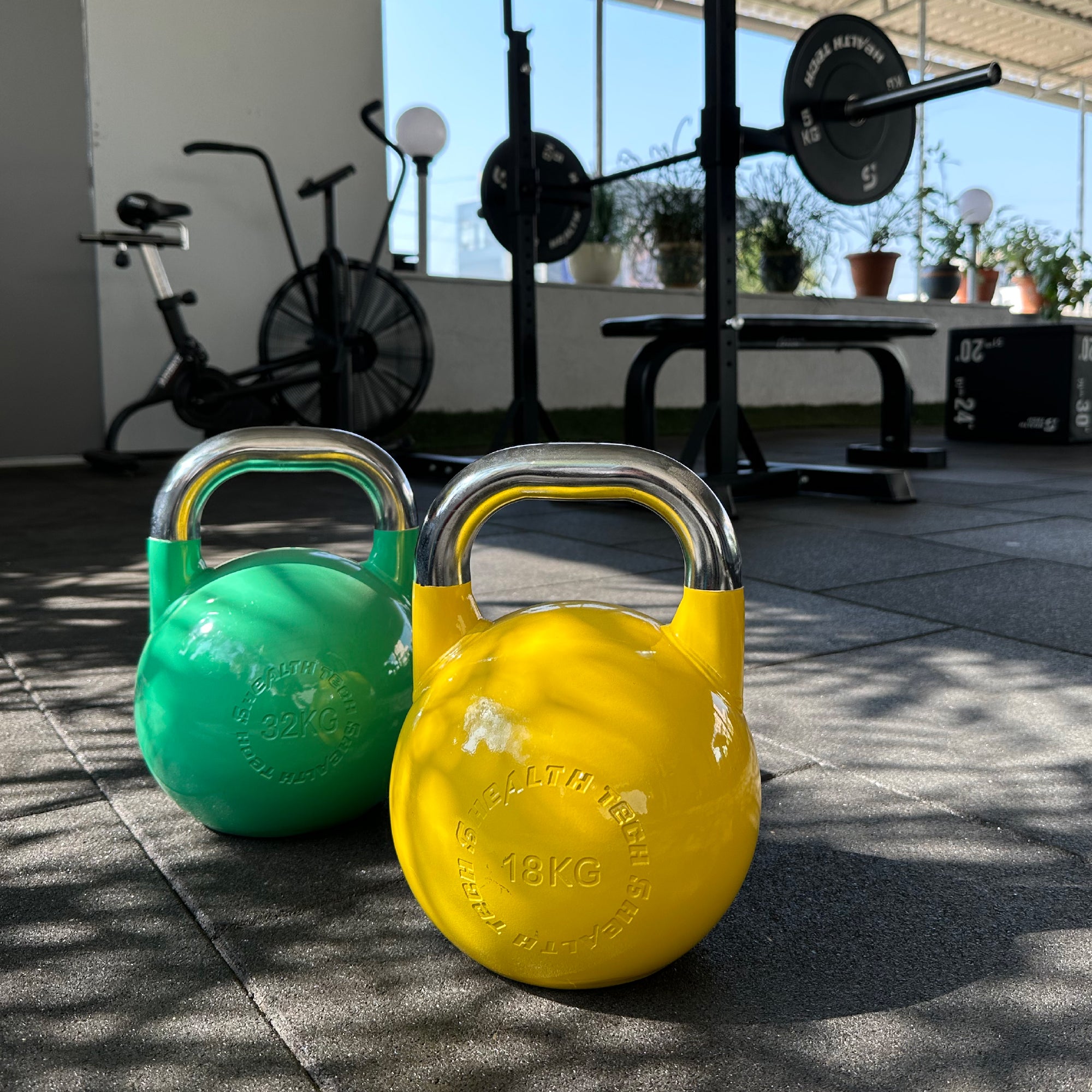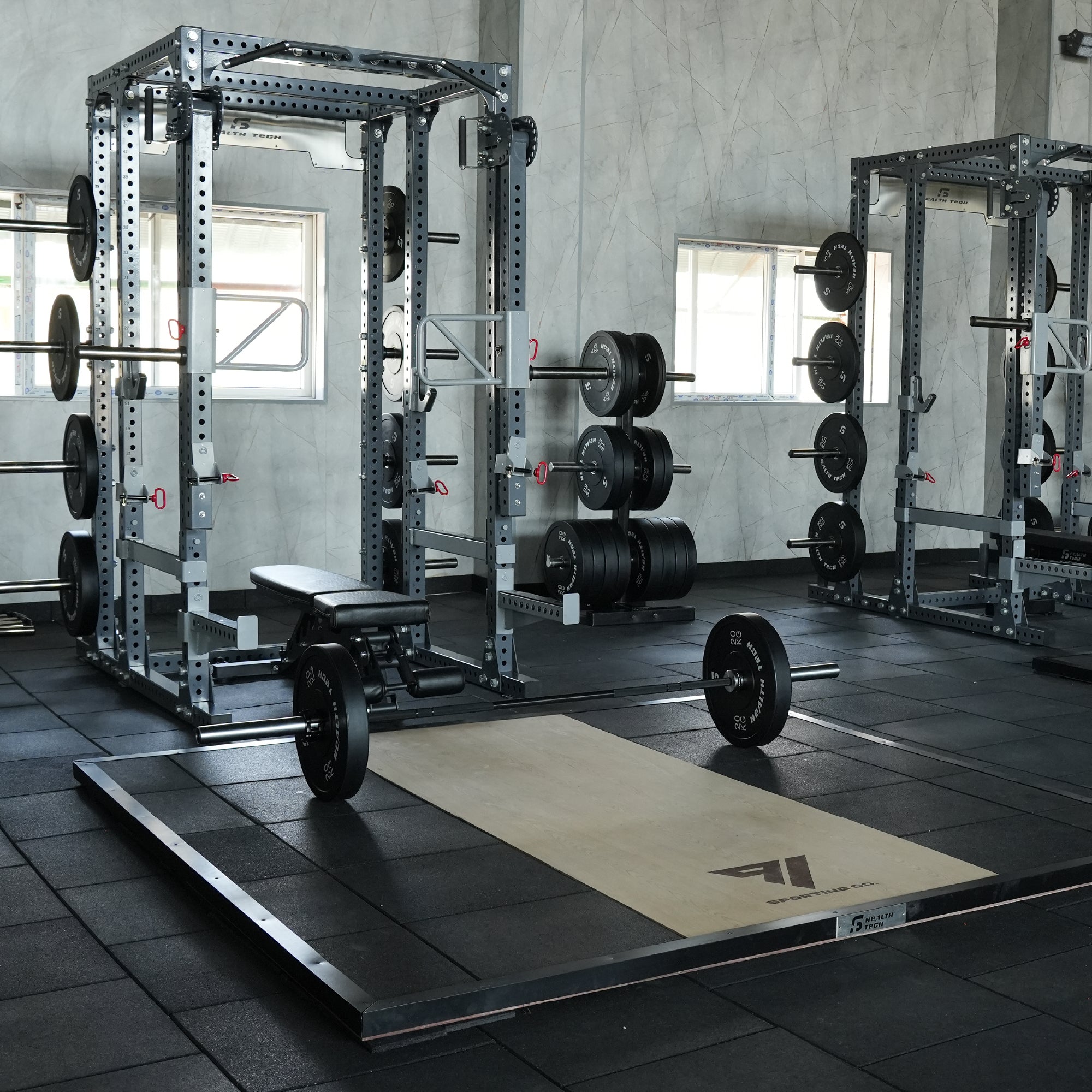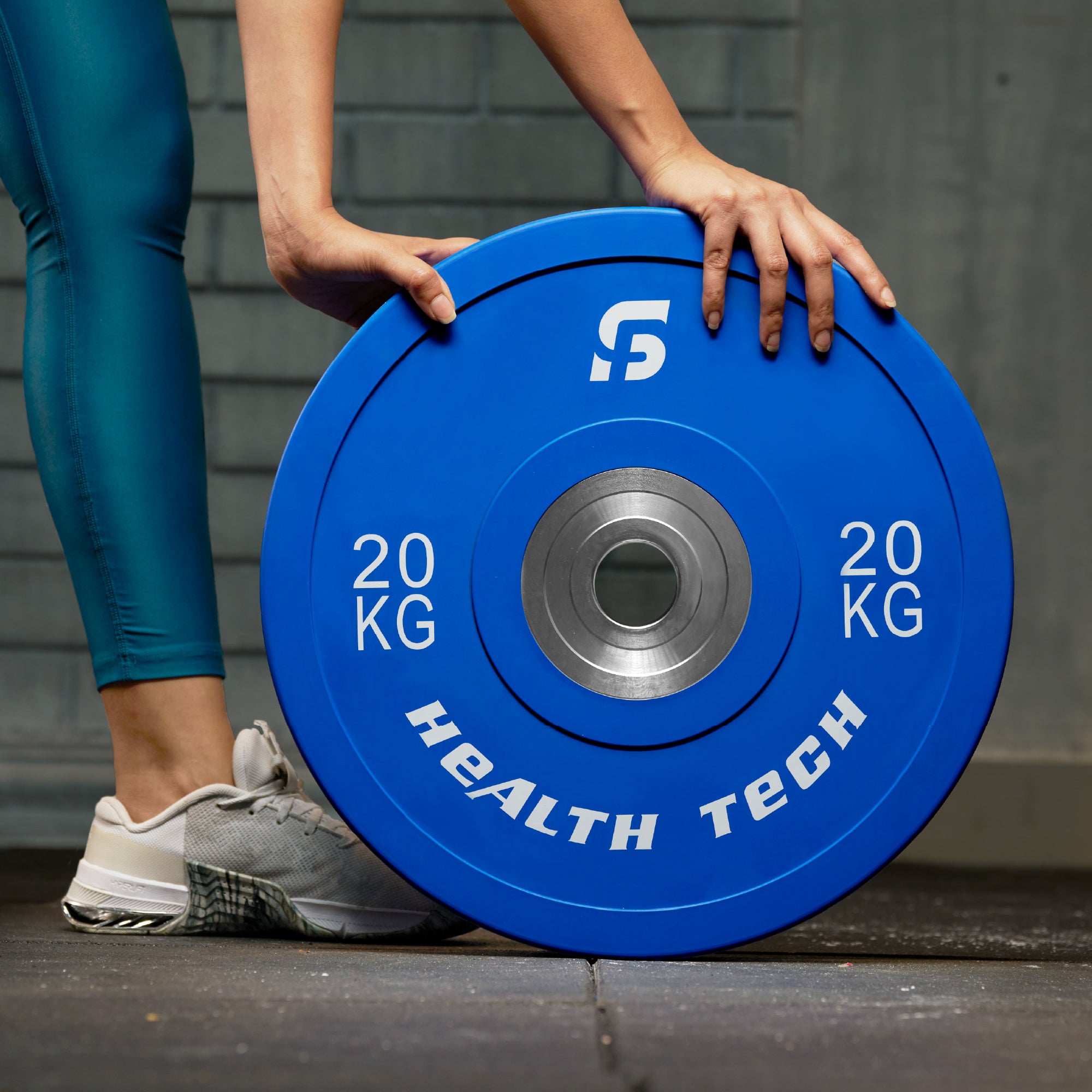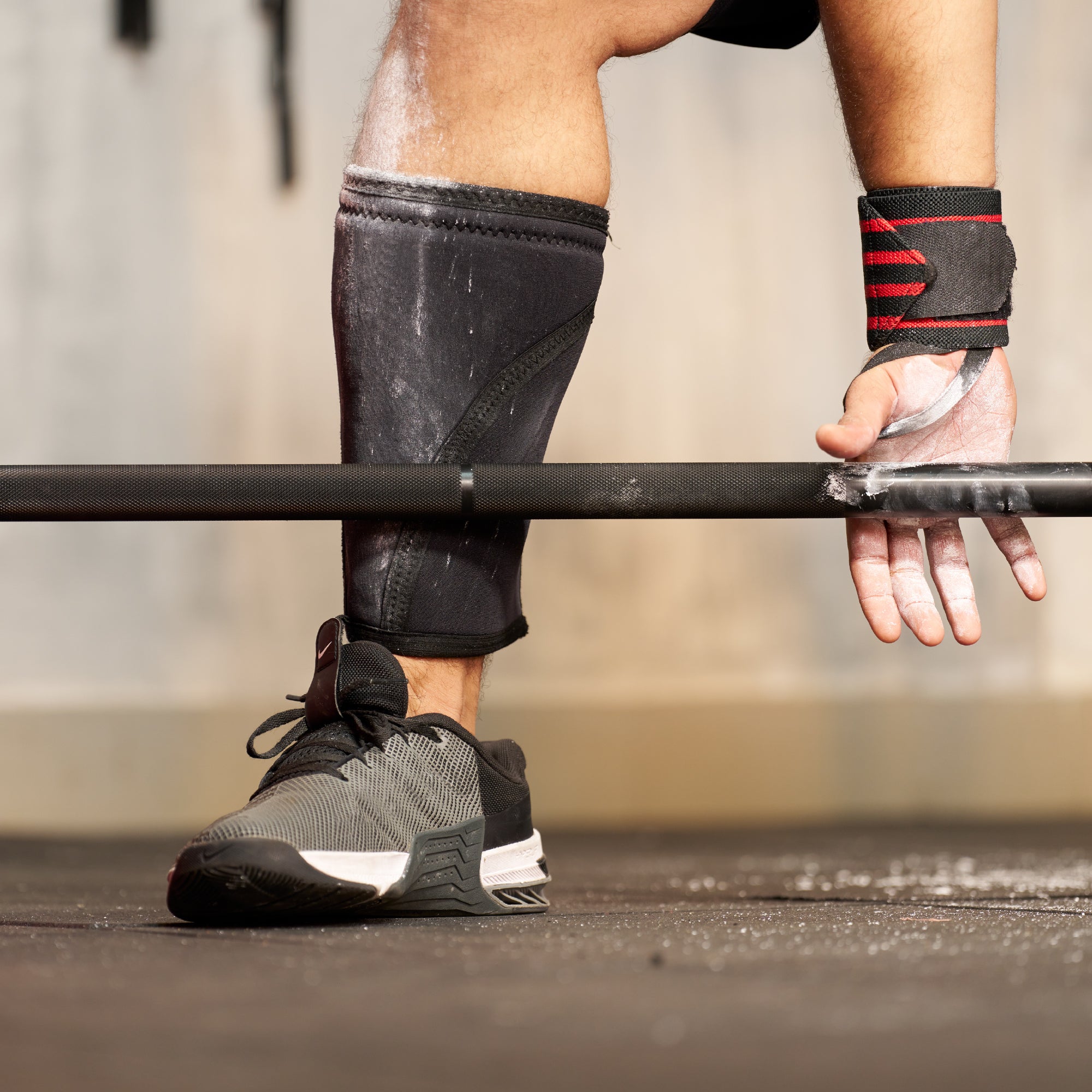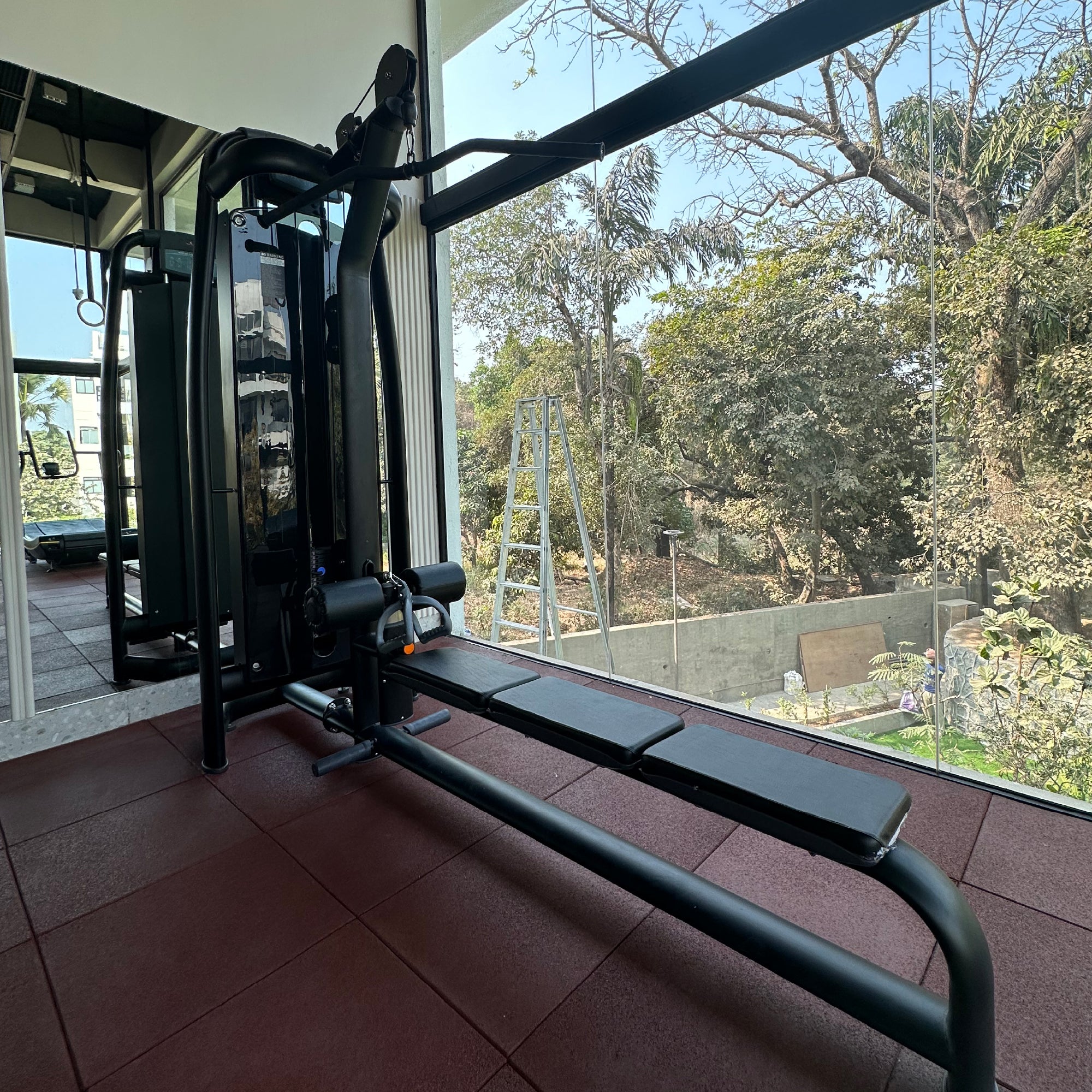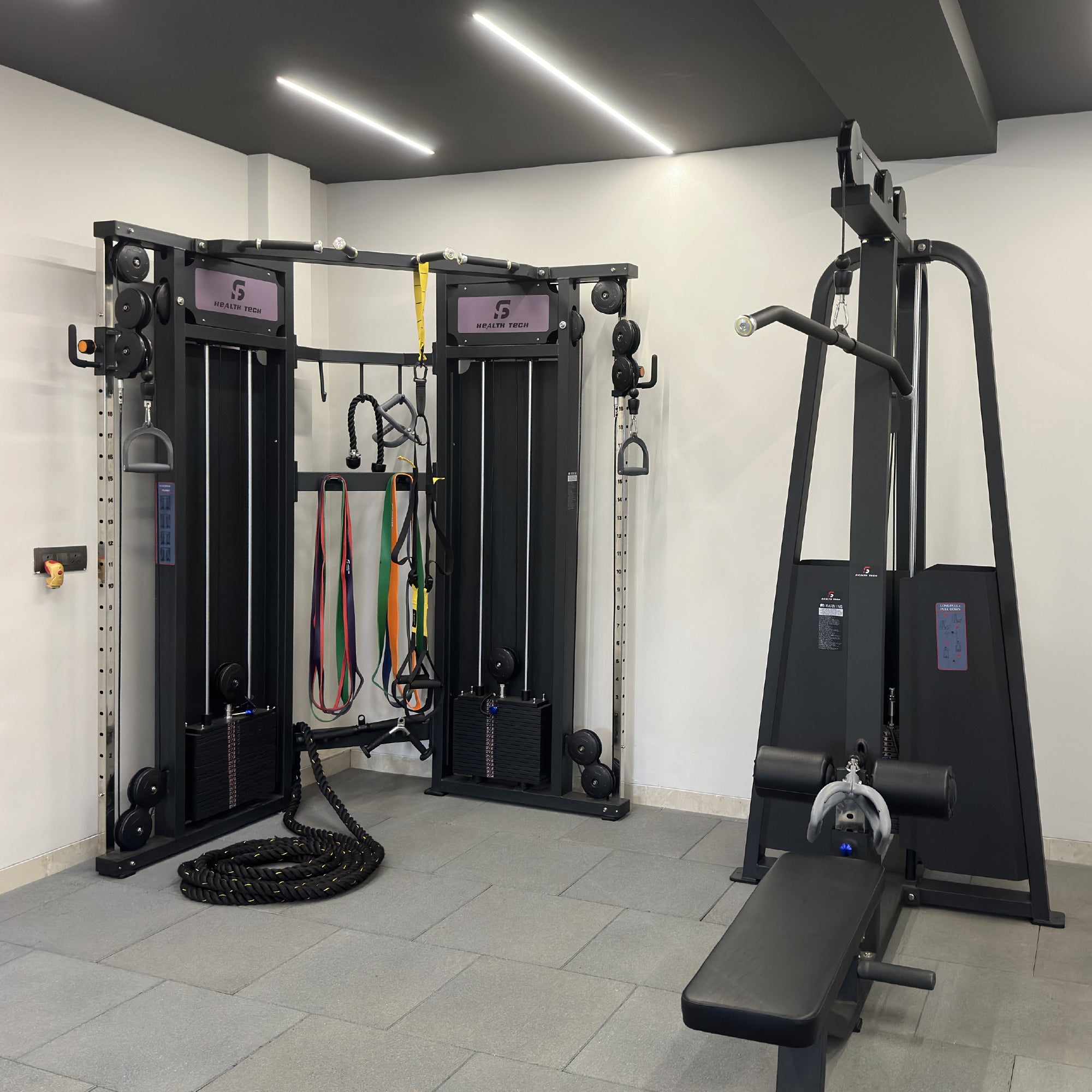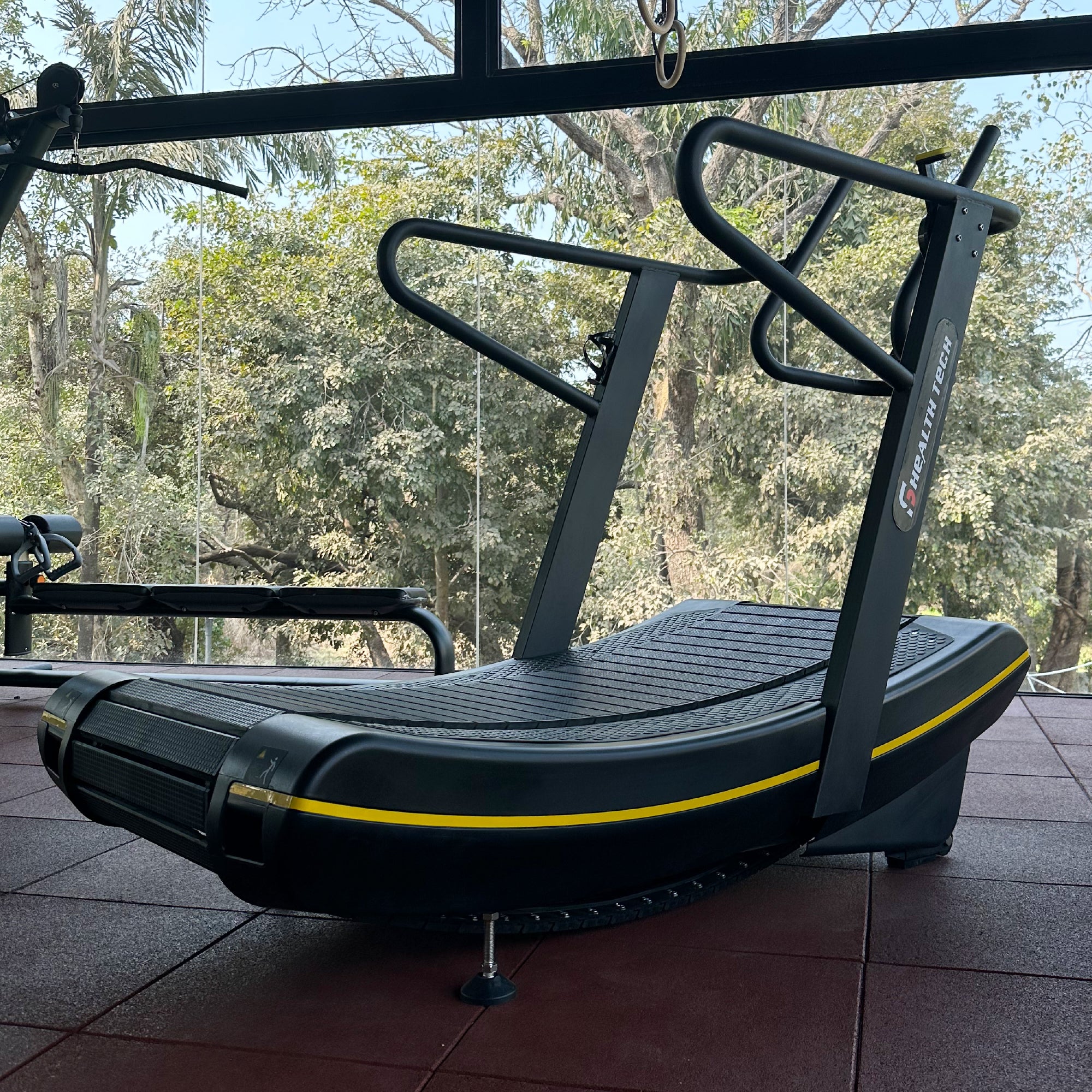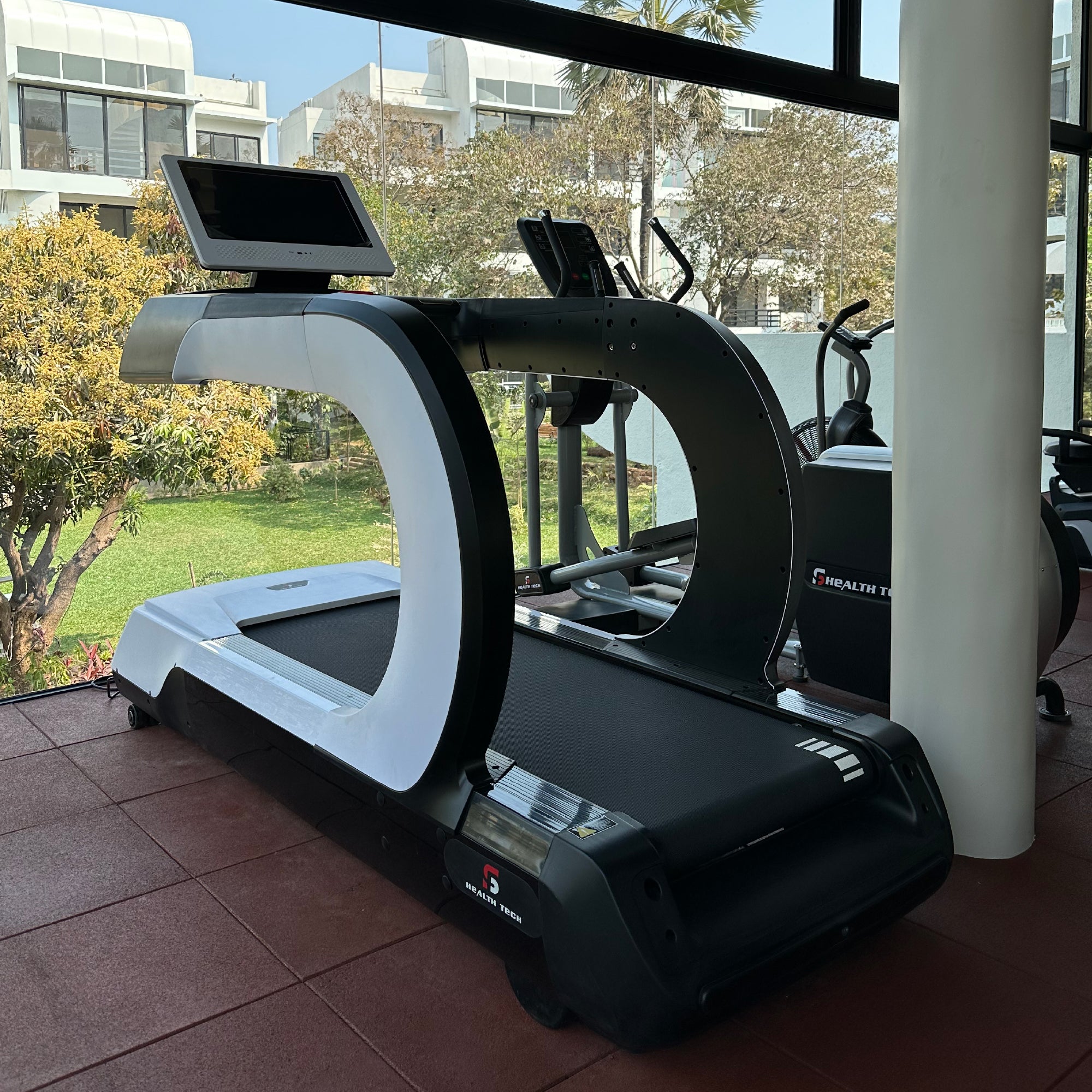Guide to Perfecting Your Kettlebell Swing: Techniques and Benefits

In the fitness world today, emphasis is placed on functional and effective workouts. And one key piece of equipment used for effective functional workouts is the kettlebell. Originally used as counterweights in 18th-century Soviet marketplaces, Russian athletes and military personnel recognised it as a handy tool that could be used to maintain full-body strength and condition the body. Since then, the kettlebell has become an integral part of Russian fitness and military training and even turned into a competitive sport in the late 19th century!
Furthermore, kettlebells then gained popularity across the globe due to their versatility as a piece of equipment, which helps give an all-rounder workout. Out of the many strength and conditioning exercises that we can do using a kettlebell, one of the most effective and holistic ones is the kettlebell swing.
In this article, we will be discussing what a kettlebell swing exercise is, the various muscles it strengthens, kettlebell swing benefits, steps on how to execute the perfect swing, its variations and progressions, and so on.
What Is a Kettlebell Swing?
A kettlebell swing is a full-body exercise that uses a kettlebell weight. You swing the kettlebell up from between your legs to chest-height or higher, using your hips and core for power, not your back. It’s like a dynamic hip hinge that works your glutes, hamstrings, core, and shoulders all at once. To start, choosing the right kettlebell is essential. At SF HealthTech, we offer two options suited to your preferences:
-
Competition Kettlebells

These kettlebells are designed for precision and smoothness, perfect for experienced users who focus on technique and control during their workouts. They’re made of cast iron and have a machined handle for a secure grip.
-
Cast Iron Kettlebells:

Our cast iron kettlebells are durable and budget-friendly, suitable for beginners and experienced users alike. They’re built to last through tough workouts, providing a reliable weight for your exercises.
Benefits of a Kettlebell Swing Workout
As discussed above, kettlebell swings are a very effective exercise, which has several positive benefits, making them an ideal part of your strength training. Some kettlebell swing benefits are listed below.
-
Increased Cardiorespiratory Health
A kettlebell swing exercise activates muscle groups throughout the entire body, which will help boost heart rate and breathing function, and increase the rate of blood flow and circulation throughout the body.
-
Strengthening of Posterior Chain Muscles
Posterior chain muscles comprise all the muscles present at the back of your body, like your upper and lower back muscles, hamstrings, glutes, etc. Kettlebell swings specifically help in the conditioning and strengthening of these posterior chain muscles.
-
Increased Power and Explosive Strength
As this exercise requires high amounts of energy and force to be exerted, one of the benefits of doing kettlebell swings every day as part of your regular strength workout leads to more power, core and explosive strength being developed.
-
Full-body Workout
Apart from targeting the posterior chain muscles, this exercise also works out your upper body, your core, as well as your lower body, which makes it a perfect all-rounder workout to strengthen your body!
-
Promotes Healthy Weight Loss and Helps Burn Calories
As kettlebell swings are a high-intensity workout, they help you burn several calories in a short period. Additionally, a kettlebell swing is a strength training exercise, which promotes a healthier metabolic rate and increase in lean muscle mass, which helps in shedding any unwanted fat.
-
Time-efficient Exercise
As this exercise focuses more on explosive strength and momentum, the general time required to finish a full body workout by doing kettlebell swings is hardly 15-20 minutes, which helps you save precious time and be able to squeeze in an effective workout during a busy work day!
-
Low-impact, High Result
Using kettlebells for your workout means that your feet are firmly placed on the ground, and it reduces the pressure and impact being exerted on your knees. Furthermore, due to the force needed for this exercise, you are still getting your heart beating faster and getting the benefits of a much more mobile workout, all with your feet staying in the same place.
-
Increases Muscle and Functional Strength
Not only do kettlebell swings help in the gain of lean muscle mass and core strength, but they also help you gain more functional strength and mobility that will help you in your everyday life. The multi-directional, high-intensity moves in a kettlebell swing will promote muscle in your back, and legs and a sustainable increase in your abdominal strength as well.
-
Helps Alleviate Back and Shoulder Pain
Kettlebell swing workouts not only help increase the strength of your back muscles but your core muscles as well, which help to straighten your spine, remove pressure from your lower back and promote good posture. Additionally, the mobility of your shoulders will also be increased due to the controlled force and momentum you have to exert to complete the exercises.
What Muscles Do Kettlebell Swings Work?
In a kettlebell swing, muscles are worked out throughout your body. Usually, different exercises are used to stimulate and strengthen these varied muscle groups, but with kettlebell swings, you can have a high-intensity full-body workout in a matter of minutes. So, now that we have understood the various benefits of a kettlebell swing, let us understand which muscle groups it impacts and how it helps us.
-
Back Muscles
When executing kettlebell swings, you are engaging multiple upper back muscles like your trapezius and rhomboid muscles, which prevent your shoulders from rounding out, support the shoulder blades, help change the stance, and help keep your arms and body frame steady while swinging the kettlebell. Additionally, the erector spinae muscles, which support your spine, prevent your back from changing position and slouching and get activated when you switch your weight from forwards to upright positions.
-
Core and Abdominal Muscles
Just like your erector spinae muscles prevent your body from bending forward too much, your core and abdominal muscles prevent your spine from over-extending itself during the swing movement, and help to increase your core strength and help you improve your overall sense of balance and helps you keep your feet planted on the floor during the exercise.
-
Glutes
The explosive movement of this exercise is largely powered by your glute muscles. As you are pushing from your hips, your glutes are hard at work and getting squeezed and released with every rep, which helps strengthen them.
-
Hamstrings
Just like your glutes, your hamstrings are also working very hard to help your body get that right pelvic movement. When you lean forward at the top of the movement from your hips, your hamstrings get stretched and are strengthened by this exercise.
-
Quadriceps
Your quadricep muscles, also known as your quads, get engaged and strengthened during the lower part of the swing, when you are coming down from the swinging motion, and help you maintain control over the momentum of the kettlebell.
-
Calves
Your calves are also hard at work in this exercise, as your feet have to be firmly planted into the ground and your calves have to be active and exert force to keep your balance and prevent your body from moving in the direction of the weight.
-
Deltoids
Even though your arms are not exerting any force, your deltoids are! These shoulder muscles help you lift the kettlebell and maintain control of the movement during the downward part of the swing.
-
Grip Muscles
Last but not least, your wrist, forearm and hand muscles get a great workout by helping you stabilize your control and grip over the kettlebell handle during the workout, and this helps improve your grip and control over your workout with weights of any kind.
Whether you are thinking or trying out a 2-handed kettlebell swing, or a kettlebell CrossFit workout, including this piece of equipment and especially this exercise in your workout routine can help you gain strength, power, agility and control over your muscles in an extraordinary manner, the results of which you shall be able to observe very quickly.
How to do a Proper Kettlebell Swing?
Now that we have understood what a kettlebell swing is, its various benefits and the various muscle groups it impacts, let us understand how to execute a correct kettlebell swing. If your posture or your stance is wrong, not only do you stand a chance of injuring yourself seriously, but you will also not be able to get access to the various benefits this exercise offers. Listed below is the step-by-step process of how to execute that perfect kettlebell swing motion.
- Find an area where you have enough space for the exercise, ideally 4 or 5 feet in front of you and a few feet behind you.
- Place your kettlebell between your feet, which have to spread out.
- Position yourself so that your feet are wider than hip distance, but not by much. Ensure that your toes are lightly angled outwards. Furthermore, ensure that your knees are bent slightly to support your body weight and the kettlebell’s weight. You do not need to squat, just bend.
- After your stance is set, ensure that your shoulders are rolled back and your chest is out. This can only be done if your back is ramrod straight, from the base of your neck to your lower back. Additionally, when you position your shoulders, ensure that your core is engaged and your abs contracted.
- Once you are in the proper position, push backwards with your hips, and bend your upper body to grip the kettlebell. Ensure that you do not bend your back or squat, but rather, are moving with your hip movements, with the hips acting like a door-hinge, and being your centre of balance.
- Inhale, engage your core in the process and grab the handles of the kettlebell with both hands. Make sure that your back does not bend, your shoulders are rolled back, and your chest is out.
- Then, with explosive force, exhale and swing your hips in a hinge-like motion while engaging and squeezing your glutes and hamstrings. This movement is how you will come back to an upright position, rather than rising with your legs. Remember, the hips are the centre of balance and you should ensure that they do not extend beyond your shoulders.
- This movement and force exerted will help the kettlebell swing forward, almost like a pendulum, and you should let it go as high as it can, till the peak of the swing. Do not exert any force from your arms as that will simply reduce the impact of the explosive hip movement.
- The highest point of the swing, also known as ‘the float’, is when you need to inhale and grip the kettlebell properly as it swings back toward the ground. You need to engage your grip muscles and press your hips back to maintain control of the momentum of the kettlebell during the return so that there are no sudden jerks.
- Ensure that you allow the weight to swing between your legs, along with ensuring that your spine is still aligned.
- Continue this process until you have finished your desired number of reps. Ensure that your glutes and hamstrings are hard at work, and you do not make any sudden, sharp movements and maintain control over the force exerted and the momentum of the kettlebell until you can gradually stop and rest the kettlebell on the floor.
Russian Kettlebell Swing vs American Kettlebell Swing
The standard kettlebell swing that we just outlined in the previous section is also known as the Russian kettlebell swing, mainly because it originated in Russia. We have learnt that this exercise has several full-body benefits and can help boost your cardiovascular health along with metabolism. But is there any Russian kettlebell swing alternative in the fitness space? Indeed, there is. The American kettlebell swing is very similar to the Russian way in all aspects except one- the height you lift the kettlebell to at the peak of the swing.
In the American way, you require more muscle power and exertion from your arms and shoulders as well, as you hold the kettlebell directly above your head at the peak of the swing, as compared to the Russian way, where you only bring the kettlebell up to chest level. The American version requires more strength and coordination, and is hence, more advanced. Conversely, the Russian way allows you to lift heavier weights. Hence, both methods of executing a kettlebell swing are effective, provided you are following the right techniques and you are being safe with your movements.
Kettlebell Swing Variations and Progressions
While there are only two types of kettlebell swings, which we outlined in the section above, there are several variations and progressions you can use to tweak your regular kettlebell workout and make it more dynamic and challenging. Including such variations will help you keep your workout more interesting, and it will help keep different muscle groups engaged and prevent wear and tear. Some variations that you can attempt after mastering the traditional kettlebell swing are listed below.
-
Single-arm Swings:
If you wish to challenge yourself after mastering Russian kettlebell swings, try single-arm swings. They are tougher as they engage your core and the shoulder at work more, as along with balancing the weight of the kettlebell, you also have to regulate your body and prevent it from turning due to the uneven weight.
-
Alternating Single-Arm Kettlebell Swing:
Rather than heavy kettlebell swings that may lead to potential injury if done improperly, try attempting alternating single-arm kettlebell swings as they give you an added rhythm when you have mastered single-arm swings. At the peak of your swing, catch the kettlebell with your other arm and bring it down to the starting position with precision, to exercise control over your muscles.
-
Double Kettlebell Swings:
A two-handed kettlebell swing is a step above the other variations, as it involves holding kettlebells in both hands, which helps strengthen your grip muscles as well as increases the overall load for the swing. Double kettlebell swing benefits range from increasing the strain on the muscles being used, to helping you gain more control over your force exertion, along with increasing your explosive power.
-
Chest Swing/Bottoms-up kettlebell swings:
This is not that much of a variation, as it is a precursor to you mastering actual kettlebell swings. This version involves you holding a light kettlebell against your chest, maintaining the same posture of a swing, and going through the movements by hinging your hips, but not swinging the kettlebell. This exercise is to help you gain an understanding and get used to the hip-hinging movement with added weight being involved, without the actual strain of swinging until you can execute the exercise properly.
Safety and Precautions
Whether you are attempting to master kettlebell swings or engaging in any other workout, taking the right precautions to prevent injuries is of paramount importance. Taking such safety measures into consideration while working out ensures that you get all the benefits of your exercises while minimising all the risks. Some safety precautions to keep in mind while doing kettlebell swings are listed below.
- Warming Up Properly Before Swinging: Warming up beforehand ensures that your heart rate is elevated and your body is ready to exert a certain amount of force. If you do not warm up properly, you stand a chance of straining your muscles or even sustaining painful muscle spasm injuries due to the suddenness of the movement.
- Listening to Your Body and Avoiding Overexertion: Listen to your body! If the weight of the kettlebell is too much, or the movement is exacerbating any old injuries, you may feel sharp and shooting pains in your joints, which is a signal from your body to stop the exercise and move to something else for the time being.
- Progressing Gradually to Heavier Kettlebells: Always increase your weights gradually. There is no need to overexert yourself by attempting to swing a weight which your body cannot sustain. Take your time, and increase your weights bit by bit, to ensure that you sustainably increase the strength and capacity of your muscles.
- Seeking Guidance from a Certified Kettlebell Instructor: As this exercise requires a considerable amount of basic core, shoulder and back strength, it is better to get advice and instructions from a certified kettlebell instructor, as their expertise in the area means they will be able to guide you regarding proper posture, stance, and gauge which weight you will be able to handle.
FAQs
-
How to pick the right weight for a kettlebell swing?
Kettlebells come in all shapes and sizes, starting from as small as 2.5-5kg, and going up to 50kg! It is recommended that you start with lighter kettlebells when you are attempting the exercise for the first time, anywhere between 5-10kg, depending on your core strength. As you master the exercise and learn to maintain your form and posture, you can always level up with higher weights.
-
How to stretch before performing the kettlebell swing?
Ideally, you should do full body stretching, like a sky-reach arm stretch, along with alternating toe touch exercises, to ensure that your arms, shoulders, and spine are warmed up and ready for your kettlebell workout. You can even attempt doing the mountain climber exercise to open your hips and help you engage your core.
-
Do kettlebell swings work abs?
Nothing is better than kettlebell swings for abs! Kettlebell swings engage your abdominal core muscles, which prevent your spine from over-extending itself during the swing movement, and help to increase your core strength and help you improve your overall sense of balance
-
Can you do kettlebell swings with dumbbells?
Yes, you can. Doing kettlebell swings with a dumbbell has the same pros as using a kettlebell for the exercise. But if it comes to kettlebell vs dumbbell, the former wins this round as doing swings with a dumbbell may feel awkward due to its wider shape.


